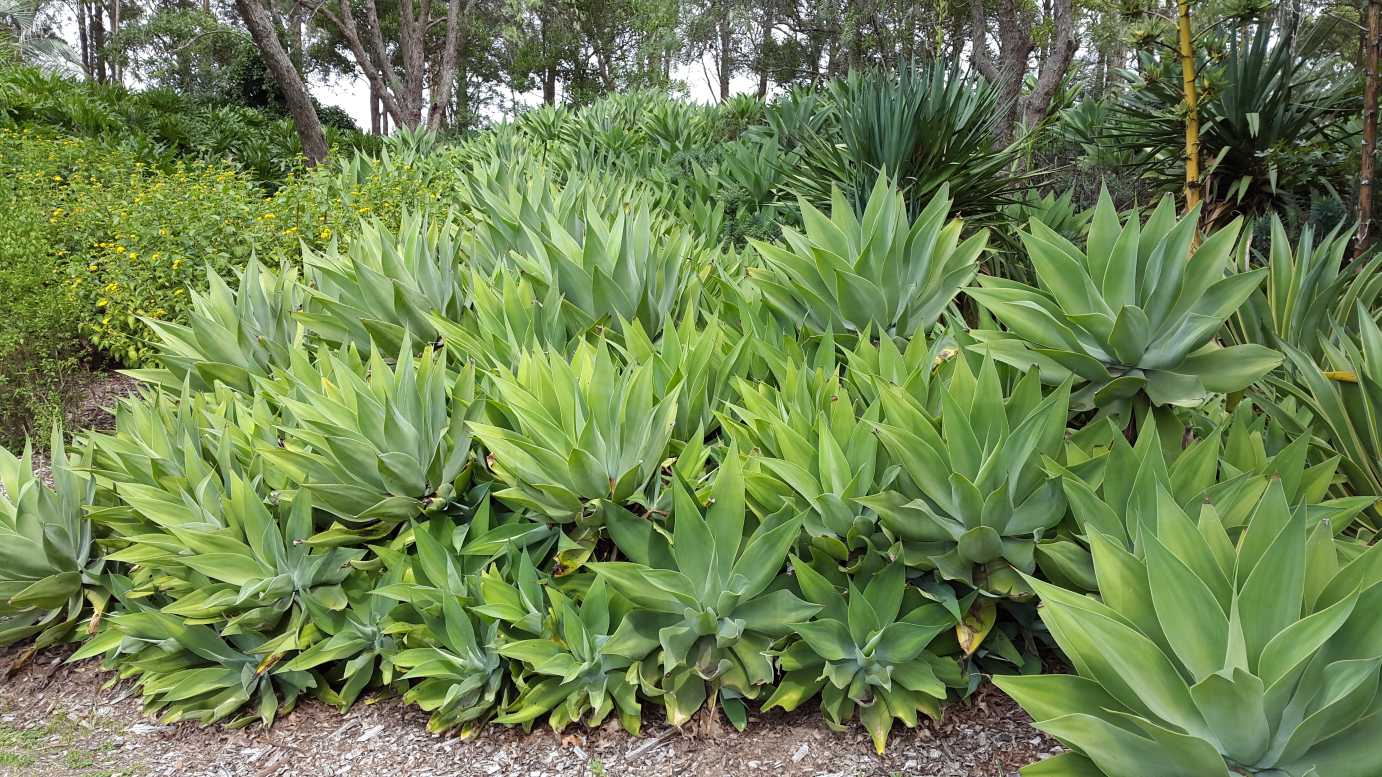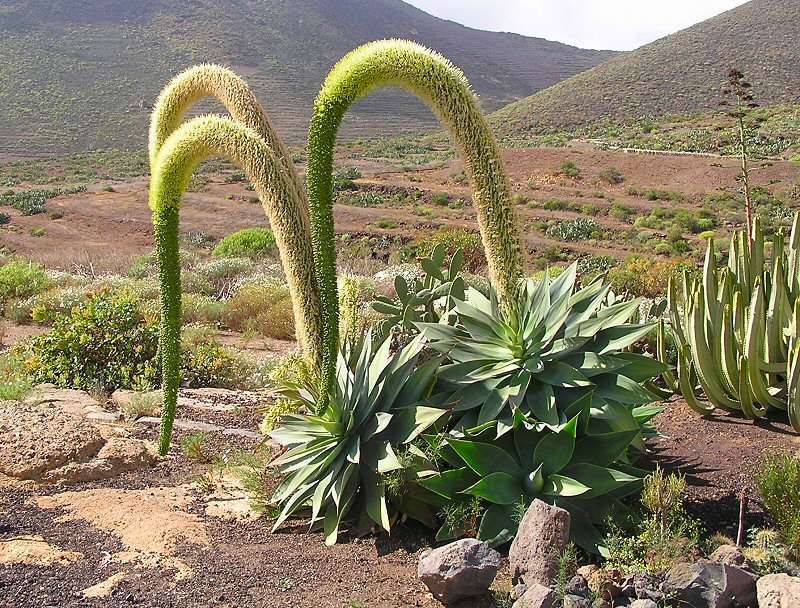Foxtail agave - 10 seeds






Foxtail agave - 10 seeds
Agave attenuata is an unusual succulent belonging to the Agave plant genus and the Asparagaceae family of plants. It’s native to the Mexican state of Jalisco where it produces a long, curved stem with greenish-yellow flowers. Fox Tail Agave is a particularly showy plant, even without blooms. It grows in a rosette shape that packs a lot of visual interest. It looks great in modern gardens, desert gardens, and around tropical plants. Since it does not have prickly spines, the plant poses little threat to animals and small children.
1. Mix equal amounts of garden soil, sand and broken brick perlite. Sterilize prepared substrate by putting it in a microwave for 3 minutes or in your oven for 45 minutes approximately.
2. Previously prepared containers for planting are to be filled with substrate, but while doing it, be careful and leave some space at the top, at least 0.5 inches (2cm). Add plenty of water and leave the container, so that the water has some time to decant.
3. Plant Agave seeds, but leave at least 0.4 inches (1cm) of space between each seed. Then cover the seeds again with a thin layer of substrate, and to finish it off, cover it with a thin layer of fine gravel, with grains no bigger than 0.12 inches (3mm). Water it again.
4. Moisture is the most important part for seed germination. It’s best to cover the container with a piece of nylon or a plastic bag in order to keep it moisturized. The container with seeds should be put somewhere warm, but not exposed to direct sunlight. The temperature needed for Agave to germinate is 77°F (25°C) and above.
5. The germination can start as soon as 4 days after planting, but it’s more frequent for it to start after 10-12 days. Remove the glass that kept the container moisturized 2 weeks after planting.
6. You need to spray the substrate every day, it cannot be let to completely dry off. It is also important to provide the plant with sufficient sunlight during the day, but avoid direct sunlight for a couple of months. It’s of great importance for Agaves not to change its light regime during this sensitive period. Try to provide it with a similar amount of light every day.
7. Agave’s seedlings have a tendency to fall over, which can be fatal for them. You can prevent that by adding some pebbles around the plants. Agaves bred from the seed start off as one leaf. The empty shell of the seed can stay at the top of the plant for a long time. You can take it of gently by yourself, but it’s not necessary. The plant starts to form a new leaf four weeks after germination, so they start looking like mature Agaves. However, only after forming the third leaf will Agaves look more like their parents.
Light: Bright sunlight year-round. Consider moving your plants outside during the summer, where they can luxuriate in full sunlight, and make sure they get plenty of winter light.
Water: In spring, water with warm water just as the soil begins to dry out. Don’t let the soil become completely dry. In the winter and fall, when growth is suspended, water very lightly.
Temperature: They prefer warm spring and summer temperatures (70ºF/21ºC – 90ºF/32ºC) and cooler fall and winter temps (50ºF/10ºC – 60ºF/15ºC).
Soil: Use standard succulent or cacti potting mix.
Fertilizer: Feed in spring and summer; do not feed during fall and winter.
Proper Care: Agave attenuata are one of the easiest plants to establish and maintain. Light: Agave attenuata grow in full sun to shade. Provide the sunniest possible position for Agave attenuata. But if a plant was subject to shade treatment, it should be acclimatised to full sunlight gradually by moving the plant first into bright light for a week or two. A sudden change in light intensity can burn the foliage. Agave attenuata is an excellent house plant for southern exposures. Watering: In general, these are not easy plants to overwater as are many other succulents, but some exceptions exist. And they are not plants that are easy to underwater either, though no agave can exist forever without at least some water. Anyway, Agave attenuata will thrive in periods of dryness, thus is a very easy to maintain plant. Watering thoroughly once a week in the summers (more often in plant is in full sun or and unglazed clay pot, or if you live in a hot, dry climate) is usually fine, and less often, to hardly at all, in winters. Temperature: Tolerates seaside conditions but it will usually be damaged in temperatures much below -2°C (28°F). Agave attenuata will do best if kept at normal room temperatures during the growth period and in a rather cooler environment 10-13°C (50-55°F) throughout the rest period. Feeding: Apply standard liquid fertiliser every two weeks during the active growth period. Soil: Agave attenuata are best grown in reasonably well drained soils. When planting into pots, can be used Succulent and Cacti Mix. If planting in ground, this mix can be incorporated with your parent soil at the rate of 70% parent soil to 30% Succulent and Cacti Mix. Potting and repotting: For pot culture it is best to use a well-draining mix in a relatively shallow pot, though Agave attenuata will do well in deep pots, too… just a waste of soil. After several years it is recommended to change the soil. This is good time to see what is going on with the roots, as some agave roots will completely fill the pot and suckers may be crowding the mother plant. Either the plant can be moved up a pot size if this is the case, or you can remove the suckers and most of the roots and repot it back in the same pot. Agave attenuata tolerate a good deal of root abuse and reroot quickly. If there is severe root damage from the repotting procedure it is probably best not to water you agave for a week or so, and keep it out of full, hot sun until then. Do not repot in the dead of winter as that may lead to root rot. Repotting is also a good time to remove old, dead leaves, weeds and any parasites you might find near the leaf bases or on the roots. Culture: Although Agave attenuata survives in poor soils, it does best in rich soils ( 2 parts peat moss to 1 part loam to 1 part sand). The plant is extremely drought tolerant but does better with ample moisture. As plants get older, they produce stout trunks up to 1.5m (5 feet) tall, and form clumps to 1.5 (5 feet) across.
